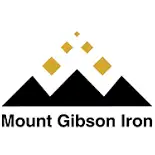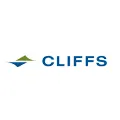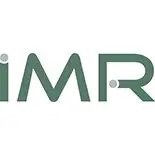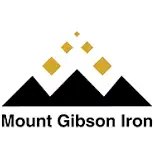
Introduction
Phosphorus is a hazardous impurity (poison) in steel. Steel with high phosphorus content becomes extremely brittle at a low temperature, and the mechanical properties of steel exhibit worsening impact strength and elongation abruptly decrease. Therefore, for obtaining low-phosphorous manganese-containing steels, it is necessary to have manganese ferroalloys with the lowest possible phosphorus content. The production of such manganese ferroalloys is possible in the presence of low-phosphorus ores and concentrates rich in manganese. In the case of poor manganese ores with increased phosphorus content, after ore-dressing, it is necessary to introduce an additional process stage such as dephosphorization of manganese concentrates, and then to smelt manganese ferroalloys based on the obtained concentration. So knowledge of phosphorous content in raw materials of steel is very important.
Spectrophotometric method for determination of phosphorous involves various reducing agents, for example, ascorbic acid, stannous chloride, mixture of hydrazine sulfate and sodium sulfide. A few of these methods require complicated and expensive equipments and few of them also involve complicated extraction procedures limiting the practice of such methods in common laboratories. In this background we have tried to develop a simple and straight forward spectrophotometric method for phosphorous determination with a reducing agent, hydroxyl ammonium chloride. Hydroxyl ammonium chloride is commercially available, economically cheaper, known for good shelf stability and already used as a reducing agent in phosphorous determination by other method. An official phosphomolybdate method involving ascorbic acid has a limitation associated with the latter’s stability that prompted us to consider hydroxyl ammonium chloride as a reducing agent. In the present method, hydroxyl ammonium chloride is used to reduce the phosphomolybdate formed in acidic medium from the test quantity of phosphorous and the concentration of reduced phosphomolybdate is measured from the absorbance at 825 nm. The developed method is used effectively for the determination of phosphorous present in the samples of iron ores, manganese ore, silico manganese, ferro manganese. The results of phosphorous determined from the new method involving heteropoly acid are in good agreement with the results of phosphorous determined separately from the method involving ICP-OES.
Experimental
After dissolution of samples (Mn Ore, Iron Ore, Silico manganese and Ferro manganese) filter off the silica. Transfer a suitable aliquot of the solution in two 100 ml volumetric flasks, add to each flask iron (III) chloride solution and ammonia solution until the first appearance of an iron (III) hydroxide precipitate. Add HCl dropwise until the precipitate is dissolved. Add hydroxylammonium chloride solution, heat the solutions to boiling to decolorize them. Allow the solutions to cool to 25 ℃ and add HCl (1:1) to both the flasks but add ammonium molybdate solution to one of the two volumetric flasks.
Photometric measurement
Allow the solutions to stand for 10 min in order to develop the colour. Measure the absorbance of the test solution using the spectrophotometer at 825 nm, against the solution containing no ammonium molybdate as reference.
Blank test
Carry out the blank test through all stages of the analysis.
Calibration curve

Results
We have analysed several number of samples of different commodities
| Sample No
|
Commodity
|
%P in ICP
|
%P using spectrophotometer | Difference
|
| 28616 (CRM | SiMn | 0.205
|
0.203 | 0.002 |
| A | SiMn | 0.150 | 0.168 | -0.018 |
| B | SiMn | 0.230
|
0.246
|
-0.016 |
| C | SiMn | 0.300 | 0.317 | -0.017
|
| D | SiMn | 0.142 | 0.130
|
0.012
|
| E | FeMn
|
0.165
|
0.161
|
0.004
|
| F | FeMn
|
0.169 | 0.155
|
0.014 |
| G | FeMn
|
0.162 | 0.159
|
0.003 |
| H | LCSiMn
|
0.163 | 0.152
|
0.011 |
| I | LCSiMn
|
0.188 | 0.172
|
0.016 |
| JK 28(CRM)
|
Iron Ore
|
0.045 | 0.043 | 0.002
|
| PI 3.2
|
Iron Ore
|
0.022
|
0.020
|
0.002
|
| 682-2
|
Iron Ore
|
0.053
|
0.055
|
-0.002 |
| 176-4
|
Mn ore | 0.058
|
0.055
|
0.003
|
| NCS DC 28041 | Mn ore | 0.011
|
0.012 | -0.001
|
| SARM 16
|
Mn ore | 0.033 | 0.034
|
0.001
|
Conclusion
The optimized method for the spectrophotometric determination of phosphorous is working on simple and straight forward principles of reducing phosphomolybdate complex formed from test quantity of phosphorous and molybdate in excess followed by its reduction with hydroxylammonium chloride solution leading to the formation of molybdenum blue which could be monitored at 825 nm. Chemicals involved in the method are cheap and are considered to be normally available in common laboratories. The method is unlike other methods since it neither involves sophisticated instruments like ICP-OES nor requires strict control of pH. The reducing agent, hydroxylammonium chloride employed here to reduce phosphomolybdate is a known shelf stable and preservative and preparation of its solution is also simple and solution once prepared it is found to be very stable when compared to the nature and stability of ascorbic acid solution which is used as a reducing agent for phosphomolybdate to determine phosphorous in an official method. In that official method the reducing agent ascorbic acid solution is to be prepared on daily basis. In addition, the developed new method is working satisfactorily for the determination of phosphorous present in various samples analyzed here. The phosphorous results obtained using the new method are in good agreement to that obtained using ICP-OES. Therefore, the developed new spectrophotometric method with reducing agent hydroxylammonium chloride for the determination of phosphorous can be used either as an independent or as an alternate method to the existing instrumental method. This method is also less time consuming than wet chemical method.
Contributed by Ms. Alakta Saha under the guidance of Prof. Barun K. Gupta.


Chief Operation, FAMD, Tata Steel Limited..


Sr. General Manager,, Emirates Trading Agency L.L.C..


Mines Manager, Hindustan Zinc Limited, a Vedanta Company.


General Manager, Stevin Rock L.L.C..


Executive Vice President (Works),, DCW Limited.


AVP – Coal Quality & Sales Compliance Head,, PT Indo Tambangraya Megah Tbk (BANPU).


Laboratory Head, MMX.


Shipping Administrator, Mount Gibson Iron Limited.


Senior Director – Asia Pacific Iron Ore Sales,, Cliffs Natural Resources Pty Ltd..

Posted on April 30 2024 By Mitra S.K ADMIN
Read More
Posted on April 29 2024 By Mitra S.K ADMIN

Posted on December 30 2023 By Mitra S.K ADMIN

Posted on December 30 2023 By Mitra S.K ADMIN

Posted on December 30 2023 By Mitra S.K ADMIN

Posted on December 27 2023 By Mitra S.K ADMIN

Posted on December 27 2023 By Mitra S.K ADMIN

Posted on December 27 2023 By Mitra S.K ADMIN

Posted on December 27 2023 By Mitra S.K ADMIN

Posted on December 27 2023 By Mitra S.K ADMIN

Posted on December 27 2023 By Mitra S.K ADMIN

Posted on December 27 2023 By Mitra S.K ADMIN

Posted on December 26 2023 By Mitra S.K ADMIN

Posted on December 09 2022 By Mitra S.K ADMIN

Posted on December 02 2022 By Mitra S.K ADMIN

Posted on December 02 2022 By Mitra S.K ADMIN

Posted on December 02 2022 By Mitra S.K ADMIN

Posted on December 02 2022 By Mitra S.K ADMIN

Posted on December 02 2022 By Mitra S.K ADMIN

Posted on December 02 2022 By Mitra S.K ADMIN

Posted on December 02 2022 By Mitra S.K ADMIN

Posted on December 02 2022 By Mitra S.K ADMIN

Posted on December 01 2022 By Mitra S.K ADMIN

Posted on December 01 2022 By Mitra S.K ADMIN

Posted on December 01 2022 By Mitra S.K ADMIN

Posted on December 01 2022 By Mitra S.K ADMIN

Posted on November 30 2022 By Mitra S.K ADMIN

Posted on November 30 2022 By Mitra S.K ADMIN

Posted on November 30 2022 By Mitra S.K ADMIN

Posted on November 30 2022 By Mitra S.K ADMIN

Posted on November 30 2022 By Mitra S.K ADMIN

Posted on September 27 2022 By Mitra S.K ADMIN






